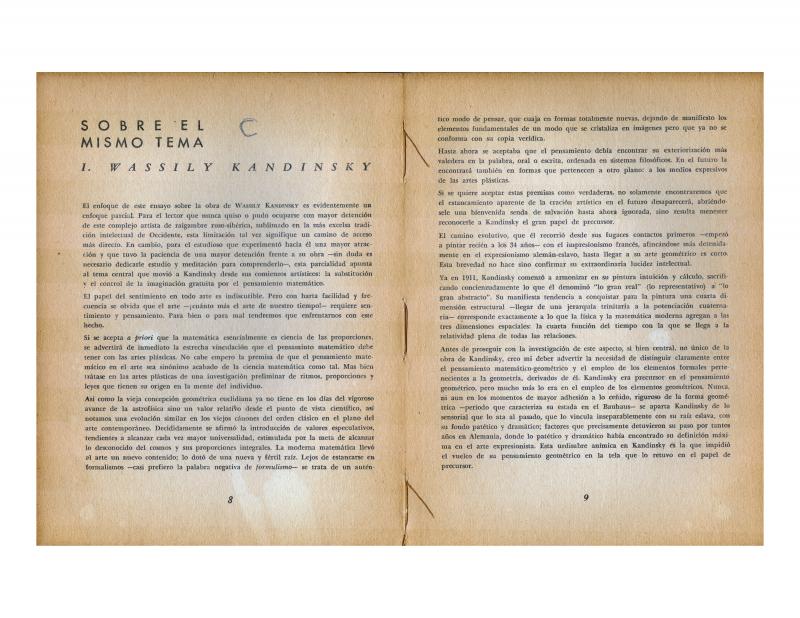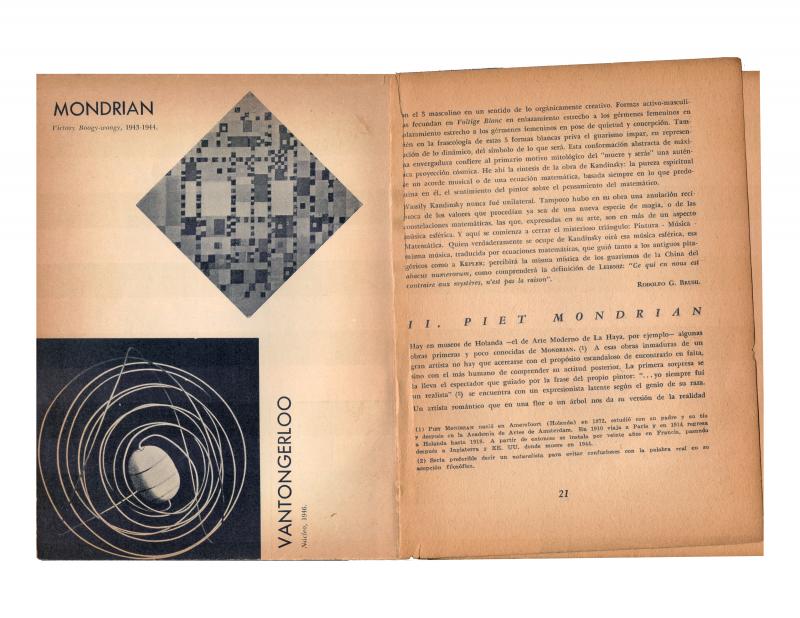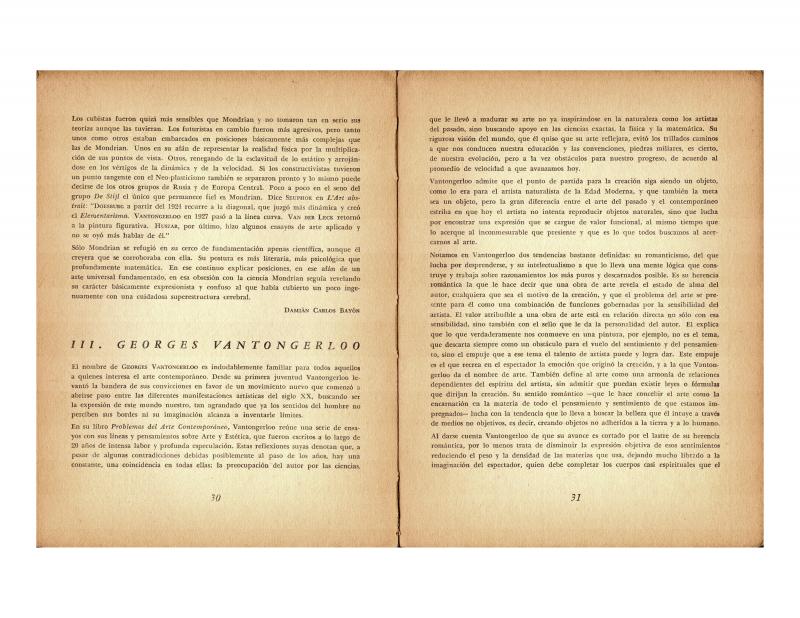Ver y estimar [To See and Ponder] magazine was an editorial endeavor directed by Jorge Romero Brest (1905–89) that stimulated critical thought and promoted the renewal of artistic languages, in line with its director’s modernizing vision. It was published thirty-four times between April 1948 and December 1953. Following an interruption that lasted a few months, publication was resumed and the magazine appeared ten more times before the second phase of its existence ended in October 1955. Damián Carlos Bayón (1915-95) was the editor-in-chief.
Jorge Romero Brest was a professor, critic, and promoter of the visual arts in Argentina. During the first regime of Juan Domingo Perón (1895–1974) he was relieved of his academic duties and became the Director of Ver y estimar magazine. Later on, the de facto government that overthrew Perón on September 16, 1955, which called itself the Revolución Libertadora [Liberating Revolution], named Romero Brest the Controller of the Museo Nacional de Bellas Artes of Buenos Aires. In 1956 he became the director of the museum, a post he held until 1963. During the 1960s he headed the Centro de Artes Visuales del Instituto Torcuato Di Tella. The Ver y estimar editorial project was undertaken with the support of his disciples as an offshoot of the art history classes that Romero Brest taught after being removed from his position as professor by those in power during the first Peronist regime.
Max Bill (1908–94), an artist, architect, and theoretician, was born in Winterthur, Switzerland. The mathematical basis of his aesthetic ideas was evident in his paintings and sculptures, and it also influenced the development of a distinctly functional type of graphic and industrial design. He studied at the Bauhaus in Dessau and was an influential force in Europe in the fields of art and industrial design. Bill directed the Hochshule für Gestaltung [School of Advanced Studies in Form] in Ulm, and taught in higher education institutions in Zürich, and was a key figure in the development of concrete art, particularly in Argentina and Brazil. In 1954, nueva visión publisher’s house brought to the fore Max Bill, the book by Tomás Maldonado (1922).
This article has been chosen because it documents the conception of a form of art based on mathematics that was proposed by Max Bill, one of the artists who played a key role in the development of concrete art in Latin America. This article was published in Ver y estimar magazine together with three others that can also be reviewed (see file numbers indicated): “Algo más sobre el mismo tema: I Wassily Kandinsky” [Something Else on the Same Subject: One, Wassily Kandinsky (document no. 743019), “Algo más sobre el mismo tema: II Piet Mondrian” [Something Else on the Same Subject: Two, Piet Mondrian] (document no. 742979), and “Algo más sobre el mismo tema: III Georges Vantongerloo” [Something Else on the Same Subject: Three, Georges Vantongerloo] (document no. 743049).



